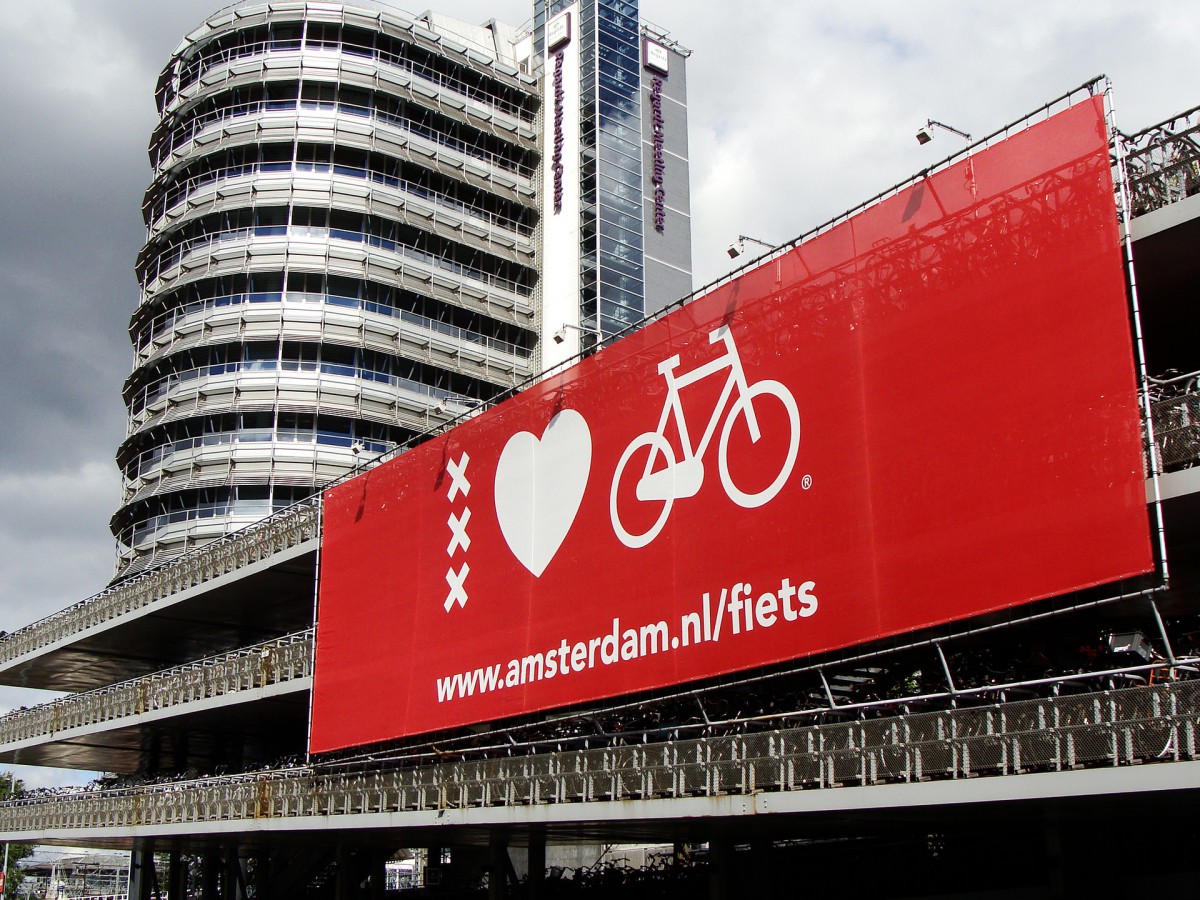Utrecht the most bike friendly city in The Netherlands
October 10th, 2017
When city officials unveiled the first section of the world’s largest bike parking garage in Utrecht, a small city in the center of the Netherlands, late last month, the feeling of accomplishment was short-lived.
While many of the 6,000 new, state-of-the-art bike parking spots filled quickly, city engineers focused on the work ahead: creating thousands more such spots and hundreds more miles of bike paths to ensure that even more Utrecht residents can comfortably commute by bike.
“We found that if you build it, people will use it,” said Lot van Hooijdonk, a vice mayor, about her city’s seemingly insatiable public demand for bike infrastructure.
Utrecht, with 330,000 residents, is the Netherlands’ fourth-largest and fastest-growing city. It is also one of the most bike-friendly places in one of the world’s most bike-friendly countries.
Utrecht beats Amsterdam
The city recently surpassed Amsterdam in a widely respected ranking of bike-friendly cities and is now second only to Copenhagen, which is more than twice its size.
Elsewhere in the Netherlands, more than a quarter of all trips are made by bicycle, and the federal government has been building up the country’s bike infrastructure over the last decade, despite cuts in other sectors.
The yearly investment of roughly 500 million euros pays for itself, proponents say, by reducing health, social and other costs.
The increased infrastructure has led to an increase in people using their bikes daily and contributes to the reduction of road accidents for cars and bikes.
In a country where there are more bikes than people — 22.5 million vs. 18 million — daily usage has grown 11 percent in the last decade, mostly because of the introduction of electric bikes, which lengthens the time many older people can use two-wheel transportation.
Innovations ahead
A 15-minute ride from Utrecht City Hall (which, like all other new buildings, has its own biking garage — this one for 1,650 bikes), a small start-up, Springlabs, is trying to perfect a device that tells bikers how hard to pedal to catch the next green light.
“Cities want to innovate,” said Jan-Paul de Beer, the company’s director. “They want to do new stuff to make the cycling experience even better.”
His traffic control system, Flo, is being tested in Utrecht, in Eindhoven and soon in Antwerp, Belgium.
Finding bike parking in Utrecht’s medieval downtown can be made easier by a smartphone app or a glance at the large digital street signs that show those garages with empty bike parking spots.
Utrecht’s cycling network includes nearly 250 miles of dedicated bike lanes. Large signs alert car drivers that they are merely guests on these roads and should limit their speed to less than 20 miles per hour, which brings us to safety advices while riding a bike.
Safety first
Becoming a bike commuter might seem daunting, especially for expats not used to this way of commuting to work, but the benefits can be worth it: exercising regularly, saving money, decreasing your carbon footprint, absolving yourself of guilt over that ‘kroket’or ‘frikandel’at lunch break.
Keep in mind the following for a safe commute
Use Hand Signals: Cyclists have their own language of hand signals that indicate when they’re slowing down, or which direction they plan to turn. Study up so you can let drivers and other cyclists around you know what you’re going to do before you do it.
Watch for Parked Cars: If there’s a row of cars to your right, leave at least three to four feet of space between you and the doors, just in case a driver opens a door without checking first for cyclists.
Ditch the Tunes: You need all your senses while riding. If you must have music, consider a small portable stereo. Earbuds block too much ambient traffic noise to be a safe option.
Rack, basket or pannier: Sure, you can carry your stuff in a messenger bag or a backpack, but putting your stuff on a separate rack gets it off your back, making your whole ride more comfortable.
Lock: The most attractive bike to most thieves is the one that’s easiest to steal. Your lock doesn’t need to be impenetrable, it just needs to be better than everyone else’s.
Bell: Dorky, maybe, but a must-have if you’re commuting on busy streets.
Fenders: Your rear tire can kick up water and dirt from the pavement, covering you in a mix of motor oil, mud, storm runoff and more. Fenders stop this process, keeping road water off you.
Helmet: Bikers aren’t legally obligated to wear helmets in the Netherlands, but a majority of bike fatalities involve riders who weren’t wearing helmets.
Lights: If you’re up before dawn or stay late and ride home in the dark, you’ll need a white light for the front of your bike and a red one for the back.
Personal Identification: Whether you buy a specialized ID bracelet or just carry your driver’s license, having identification is a must, so medical personnel can identify you quickly if you’re involved in an accident.
